Debbie Young's Blog, page 8
October 25, 2023
Learning to Love the Bindweed
A post about garden weeds was originally written for the October issue of the Hawkesbury Parish News – plus recommended autumn reads.
“One year’s weeds is seven years’ seeds.”
So a neighbour warned me, casting anguished looks at my disorderly flower beds not long after I’d moved into the village.
Much as I tried, the weeds always seemed to appear faster than I could pull them up. I tried not to let them get me down, telling myself that by the end of August they’d all stop growing anyway.
Not so now. As I write, two-thirds of the way through September, one kind of weed is still going strong. I shall forever remember 2023 for the Summer of the Bindweed.
Well-watered by the copious rainfall throughout July, August, and part of September, it seems to have risen to the top of the hierarchy of local garden invaders. Its growth has been as speedy and spectacular as that of Jack’s beanstalk, but instead of reaching for the sky, it’s been twisting and tumbling about the place. The effect is elegant and sculptural, and rather appealing until you realise how many plants it’s smothering. It wraps its stems around my shrubs and flowers like a spider spinning its silk around its prey.
When I was a small child, I was enchanted by bindweed’s flowers, which fitted so neatly on my fingertips or made hats for tiny dolls. (At that stage, I had a penchant for pocket-sized dolls, which I could sneak into school for company.)
I remember having an earnest conversation with my father when I was about six, as he waged war against bindweed in our suburban garden. He listened and seemed to understand why I loved it so much, but he went on grubbing it up by the handful.
Perhaps I should have worked harder to defeat it in my garden this year. I consult a horticultural handbook, hoping for reassurance. Its initial description of bindweed makes it sound beautiful: “heart-shaped leaves and white trumpet-like flowers”. It goes on to explain that bees love its pollen, and moth larvae thrive on its leaves.
Who wouldn’t want a pretty, romantic plant like that in their flowerbeds? Shouldn’t we all be encouraging bees and moths in our gardens?
But then the handbook casts sentiment aside and condemns bindweed for its evils:
its perennial roots self-propagate when broken upstealthy underground stems spread over a wide radiusseeds lurk underground, viable for years, ready to sprout the minute you lower your guardMy heart sinks. Having let the bindweed run rampant this summer, it may be impossible to eradicate in future. If all else fails, next spring I’ll just have to learn to love bindweed all over again. After all, as another village neighbour reminds me:
Recommended Autumn Reading“Weeds are just flowers that are growing in the wrong place.”
Each of my novels is set in a particular season, and I try to convey in them my love of the Cotswold countryside all year round. They all work as standalone books, so you can read them in any order, or start from the beginning of each series if you prefer.
If you haven’t yet read my autumnal books yet, you might like to try:
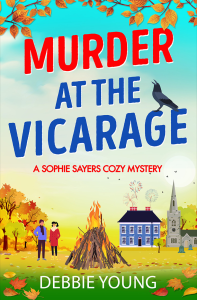 Murder at the Vicarage (Sophie Sayers #2)
Murder at the Vicarage (Sophie Sayers #2)
(originally published as Trick or Murder?)
This adventure place in the run-up to Halloween and Guy Fawkes’ Night. When the strange new vicar, the Reverend Septimus Neep, arrives in Wendlebury Barrow, he immediately alienates Sophie and Hector by trying to ban treasured village traditions, including the Halloween Ball that is meant to be Sophie’s first date with Hector. They soon find themselves on a dangerous trail of someone who is not all he seems…
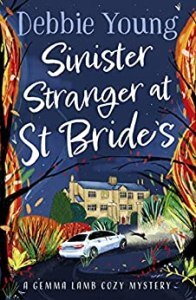 Sinister Stranger at St Brides (Gemma Lamb #2)
Sinister Stranger at St Brides (Gemma Lamb #2)
(originally published as Stranger at St Bride’s)
It’s the second half of the autumn term at the quirkly girls’ boarding school where Gemma Lamb is settling in as the new English teacher. As she returns from the half-term break, a strangely familiar man turns up to lay claim to the school’s estate. With a little help from her new friends, Gemma Lamb investigates the truth about his identity in her quest to save the school…
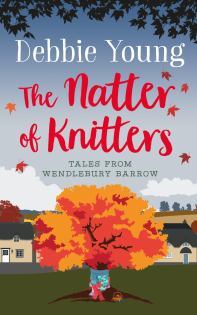 The Natter of Knitters (from the Tales from Wendlebury Barrow series of novelettes)
The Natter of Knitters (from the Tales from Wendlebury Barrow series of novelettes)
When autumn brings foggy days and cold nights to Wendlebury Barrow, Sophie joins a village charity project to knit scarves for the homeless, but a reclusive newcomer takes the WI’s plans to stage a “yarnbombing” incident too literally. This heartwarming quick-read story provides a a happy ending for all concerned and shows rural community life at its best.
WHERE TO ORDER
All of my books are available to order worldwide as ebooks or print books wherever you prefer to buy your reading matter.The novels are also available as hardbacks and audiobooks.If you have any problems tracking down the book of your choice, please let me know and I’ll come to your rescue.October 23, 2023
Originality and Ideas
This post is based on notes I wrote for my talk at the HULF Talk on Research and Inspiration at the end of September, but due to (as ever) trying to fit in more talks and readings than were feasible in the time allowed, I kept this bit back! So here it is for the first time now.
In the first part of my talk, I described where I get my ideas from, and gave a list of suggestions for aspiring authors who might be struggling to know what to write about. It’s a question that often comes up among novice writers.
Once I’ve come up with story ideas, or at least starting points for stories, they need to mature. Therefore I keep an ideas book in which I jot all my ideas down. Sometimes it will be a single line or phrase that’s triggered my imagination, or it might be a detail for a novel or short story that I already have planned. I keep separate ideas books for specific projects too.
Then I leave each idea simmering away, sometimes for years, until it’s fermented enough to turn into a short story or novel, leaving my unconscious to work on it.
Originality and NoveltyI don’t believe in writers’ block, other than in cases where you try to write a story too soon, and the thing won’t come because it’s not ready.
But must all ideas be new? Must they be things that only I have ever thought of?
That would really narrow down a writer’s possibilities! Fortunately, I don’t think they do have to be entirely new, because every author’s take on an idea is different. They see an idea through the prism of their character and their lived experience. It’s common at writers’ workshops to be given an object or a set of of words as writing prompts, yet every piece of resulting prose or poem is always very different. In the same way, if you asked six artists to draw a specific object, each picture would be unique.
It’s also evidenced by the entries I’ve co-judged on several occasions with organiser John Holland for the Stroud Short Stories spoken word event, in which we have to choose ten stories from over 100 entries to be performed at a live event. We recently announced the list of the ten stories we chose for this autumn’s event, which is on the theme of love and obsession. It was fascinating to see how very different each story was. Submissions ranged from laugh-out-loud humour to tear-jerkers, from happy-ever-afters to apocalypse.
Tickets are now on sale for the event, which takes place on Sunday 5th November – so if you’d like to come along and see the differences demonstrated, book your tickets here.
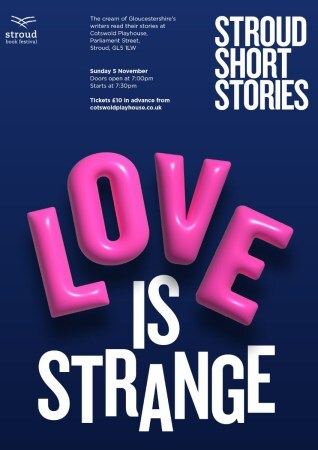 Click the image to order tickets from the Cotswold Playhouse
Click the image to order tickets from the Cotswold PlayhouseOriginality and Theft
I’ve also just come across a fabulous book about art and theft written before the advent of AI in its current form. Steal Like an Artist by Austin Kleon explains the contribution existing ideas and art contribute to new work. Kleon and licenses you to seize what you love and build on it. Do read it – it’s quick and easy and he runs an interesting newsletter too. It’s very empowering, because it justifies what may have felt, wrongly, like a guilty secret.
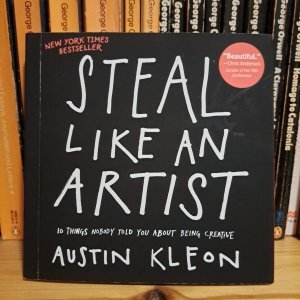 A fascinating, easy, quick read – highly recommendedOriginality and Research
A fascinating, easy, quick read – highly recommendedOriginality and ResearchBut why not just write what you know?
When you get to a certain age, doesn’t your life experience give you enough raw material? Wouldn’t that be easier than researching what you don’t know?
Well, yes – and my starting point in my writing is always what I know – the human condition, as lived by me, eg over thirty years of living in a Cotswold village and thirteen years of working at a boarding school. At some point, I plan to write about an as yet untapped part of my past, when I worked as a PR in the 1990s. I also plan to write stories with older female protagonists, having drawn largely on my younger life so far.
But research allows you to deepen a story and also to write about what you know less well, or what you don’t know but would like to. That’s an exciting experience as a writer. Over the last couple of years, I’ve enjoyed researching a story set not in the Cotswolds but in Mousehole, and I’ve learned so much about local legend, topography, history and all sorts.
This brings me to a buzzphrase that sometimes arises when people research topics is “cultural appropriation”. Although I have a small amount of Cornish blood via my great-grandmother, when I started my Mousehole project, I felt slightly uncomfortable. Did I really have the right to write about Cornwall. Then I decided, yes, I do – provided the central character and viewpoint is of an outsider. Although I try hard to get my facts right, I don’t pretend to be an expert or have the authority of a native. I don’t think Cornish nationalists will be after my blood.
My research in Cornwall has taken the form of staying in the cottage where my story is set, spending a lot of time wandering about absorbing the atmosphere, reading masses of history books, visiting the places that will be pivotal in the story, like the monument to the village’s last native speaker of Cornish.
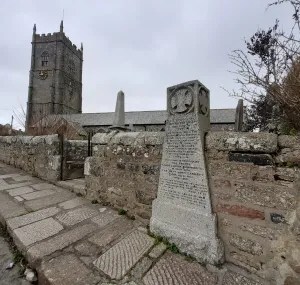 Part of my research in Cornwall was to visit this memorial to Dolly Pentreath, Mousehole’s last native speaker of Cornish (taken in March, hence grey sky and bare branches)
Part of my research in Cornwall was to visit this memorial to Dolly Pentreath, Mousehole’s last native speaker of Cornish (taken in March, hence grey sky and bare branches)Yes, I could have stayed at my desk and consulted Google and Wikipedia, but that’s barely scratching the surface and doesn’t allow you the full sensory experience of the place. It also only tells you whatever people have put online in the first place. Everything there is secondhand, and a significant amount of information online is likely to be inaccurate. But desk research can be a good starting place, especially if you click through to the links at the foot of Wikipedia to the original source materials.
If you’re a writer nervous of taking their first leap into fiction, and you crave licence to lay claim to an idea and make it your own, I suggest you read the kind of books that will give permission to lay claim to an idea and get writing. These include craft books such as Julia Cameron’s The Right to Write and Stephen King’s On Writing. The two books that made the biggest different to me were, very early on, Dorothea Brande’s Becoming a Writer and more recently Ray Bradbury’s Zen in the Art of Writing.
Meanwhile, my thirteenth novel, Driven to Murder, to be published by Boldwood Books in January 2024, taps into my lived experience – not of murder, you’ll be relieved to know, but for Sophie Sayers‘ experience of learning to drive when the village bus service is under threat of withdrawal – a threat that, coincidentally, arose in my real-life village as I was writing the book. It’s surprising how often a story you think you’ve just made up turns out to have at least an element of truth.
I’d love to hear your examples of fact proving larger than fiction. Do leave a comment if you’d like to share an example that’s happened to you.
In Other NewsFellow mystery author Kat Ailes and I will be in conversation about where we get our ideas, how to come up with an original angle for crime novels, and much more, on Sunday 12th November at Stroud Book Festival. We met for the first time last week and chatted for two hours about what we’d discuss in our one-hour talk, so you’re guaranteed a lively event!
October 6, 2023
Where to Find Story Ideas – Insights for Readers & Top Tips for Writers
This week’s post is the transcript of my introductory speech at Hawkesbury Upton Literature Festival’s HULF Talk on Research & Inspiration last Saturday. held at the Bethesda Chapel, Hawkesbury Upton, Gloucestershire
As those of you who regular guests at the HULF Talks will know, I choose a different topic for each one, and this time I chose “Research and Inspiration”.
Research and inspiration are issues affecting all books and all authors, whether they are writers of fiction or non-fiction. It’s a phrase that trips off the tongue easily, like “chicken and egg”, and, like that proverbial pair, the order they arrive in is questionable.
Inspiration for a story can lead to research, and research can lead to a new story idea.
Before I introduce today’s first guest speaker, I’d like to set the context for the afternoon with a few of my own thoughts on these topics.
To get the ball rolling, because we’re in a place of worship, I thought we’d have a bit of fun with how the Bible has inspired book titles, although not necessarily the whole book. Can you name the author of each of these Biblically-inspired novels? (Answers are at the foot of this post.)
[image error] Kane and Abel
The Sun Also Rises
Vile Bodies
Go Set a Watchman
Moab is my Washpot
Can anyone think of any others?
The Bible, mythology, legend and history may be a source of inspiration and at least a starting point for story ideas.
But actually ideas are all around us, like CCTV and speed cameras, if only you’re on the lookout for them.
The best writers have an inbuilt alert system to story ideas. You read a news report on a crime and immediately you start working out the back story.
If you’re a writer, you tend to think, ‘Doesn’t everyone have this?’ But people often ask where I get my ideas, and are sometimes incredulous that I keep coming up with them.
My problem is not shortage of ideas but shortage of time/life to write all the ideas down and turn into stories – especially now that friends suggest starting points for stories, such as when I’m at bell ringing practice or choir practice at our parish church of St Mary, Hawkesbury. Yes, stories about bell ringing and church choirs are in the pipeline!
Should I be disconcerted that at bell ringing practice, people keep telling me different ways to murder people in a bell tower?
At risk of sounding pretentious, I confess these opening lines of a poem by Keats are often in my mind:
When I Have Fears That I May Cease to Be
When I have fears that I may cease to be
Before my pen has gleaned my teeming brain,
Before high-piled books, in charactery,
Hold like rich garners the full ripened grain;
When I behold, upon the night’s starred face,
Huge cloudy symbols of a high romance,
And think that I may never live to trace
Their shadows with the magic hand of chance…
(Read the poem in full at The Poetry Foundation here.)
But if you’re an aspiring writer still wondering where to get ideas, here are my top tips:
Read a newspaperKeep a scrapbook/ideas/commonplace bookRide on public transportStand in a supermarket queue/trolleywatch or public car parkExamine your hobbies and interestsGo to a museum or art galleryTravel further afieldMy favourite example of a writer finding inspiration is W H Auden‘s poem Muséee des Beaux Arts, written in 1938 after viewing Bruegel’s painting The Fall of Icarus – you can read it here on The Poetry Foundation’s website. (Not reproducing it here for copyright reasons, but huge thanks to Gerard Boyce for reading it so beautifully at the HULF Talk.)
 XIR3675 Landscape with the Fall of Icarus, c.1555 (oil on canvas) by Bruegel, Pieter the Elder (c.1525-69); 73.5×112 cm; Musees Royaux des Beaux-Arts de Belgique, Brussels, Belgium; (add.info.: Icarus seen with his legs thrashing in the sea;); Giraudon; Flemish, out of copyright
XIR3675 Landscape with the Fall of Icarus, c.1555 (oil on canvas) by Bruegel, Pieter the Elder (c.1525-69); 73.5×112 cm; Musees Royaux des Beaux-Arts de Belgique, Brussels, Belgium; (add.info.: Icarus seen with his legs thrashing in the sea;); Giraudon; Flemish, out of copyrightMore prosaically, my novelette The Clutch of Eggs, about the crime of collecting wild birds’ eggs, was inspired by a trip to the excellent Bristol City Museum’s exhibition about birds’ nests and birds’ eggs. My interest and knowledge was deepened by research, namely reading The Most Perfect Thing by Tim Birkhead, a fascinating book about birds’ eggs, and Birdwatching Watching by Alex Horne, about the habits of birdwatchers. Google was useful for highlighting historic cases of crimes to do with wild bird egg collecting.
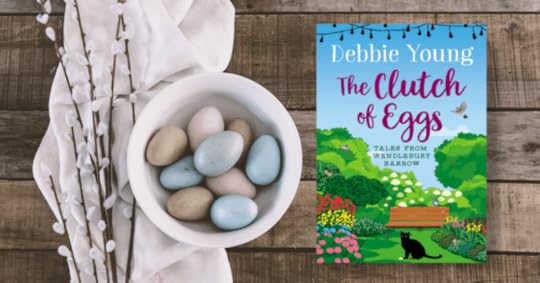 My novelette, The Clutch of Eggs, is set in Sophie Sayers’ village of Wendlebury Barrow in spring
My novelette, The Clutch of Eggs, is set in Sophie Sayers’ village of Wendlebury Barrow in springWhile I was preparing for this HULF Talk, I also collected examples of other ways authors find inspiration, and was particularly taken with this trio’s very different approaches:
[image error] [image error]Barbara Cartland used to pray the night before (listen to her interview by Dr Anthony Clare on BBC Sounds here)John Le Carré was quoted in The Times yesterday as saying “”His pursuit of women was a key to unlock his fiction,” states the biographer. John Le Carre himself said: “My infidelities produced in my life a duality and a tension that became almost a necessary drug for my writing… separate from the high literary calling… but integral to it…”Ray Bradbury made a list of nouns – The House, The Book etc – as starting points for numerous short stories, as described in his memoir, Zen in the Art of WritingThat latter approach is very trendy at the moment as bestselling author and previous HULF speaker Valerie Keogh knows, as bestselling author of thrillers with titles such as The Librarian and The Nurse
So, in summary, ideas are out there, all around us, all the time. Writers just develop the mindset to spot them, claim them and polish them up. It’s like the starting point of the metal detectorist. You just need the metal detector in your hand, and you need to be looking down and listening, ready to pick up those potential treasures, dust them off and give them a new shine…
If you haven’t already seen it – or even if you have – I highly recommend the television series, Detectorists.
NEXT WEEK: I’ll share a follow-up talk on Originality and Ideas – written for the HULF Talk but which I didn’t present on the day due to lack of time!
ANSWERS TO THE BOOK TITLE QUIZ
Kane and Abel – Jeffrey ArcherEast of Eden – John SteinbeckThe Sun Also Rises – Ernest HemingwayVile Bodies – Evelyn WaughGo Set a Watchman – Harper LeeMoab is my Washpot – Stephen FryFor more Biblically-inspired book titles, and for the Bible reference to where they first appear, read this article in The Independent:
For more information about Hawkesbury Upton Literature Festival and to book tickets for the next HULF Talk, a Christmas Special on Saturday 2nd December, visit HULF’s website at www.hulitfest.com.
September 13, 2023
The Power of the List
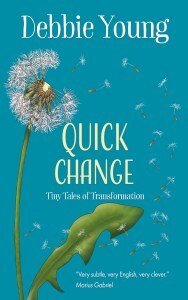 When my author friend Lucienne Boyce read the original manuscript for my first collection of short stories,
Quick Change
, she gently pointed out that she thought it odd I’d mentioned recycling bins in four of the 20 stories. I changed one bin into a bonfire, which made for a much better story. However, my column for the September 2023 issue of the
Hawkesbury Parish News
reveals that recycling is still very much in my thoughts…
When my author friend Lucienne Boyce read the original manuscript for my first collection of short stories,
Quick Change
, she gently pointed out that she thought it odd I’d mentioned recycling bins in four of the 20 stories. I changed one bin into a bonfire, which made for a much better story. However, my column for the September 2023 issue of the
Hawkesbury Parish News
reveals that recycling is still very much in my thoughts…
Recently I spotted an advertisement seeking volunteers for a council study of household recycling habits. When it popped up on my computer, it reminded me of a market research programme I took part in as a child. My best friend’s mum corralled a dozen of my classmates into the local church hall to taste-test various brightly coloured drinks. We went home clutching clanking carrier bags filled with glass bottles of lurid liquids, and instructions to report back on which flavour ran out first.
I didn’t much like any of the drinks, preferring Treetop orange squash, but the parties were fun, and the free samples made me feel special. My fond memories of the process were enough to make me volunteer for the recycling research.
The survey required me to keep a diary of everything I recycled over three days, snapping photographs on my phone. I thought I was good at avoiding waste, buying as much fresh, loose food as possible, but my diary was a wake-up call. So much packaging!
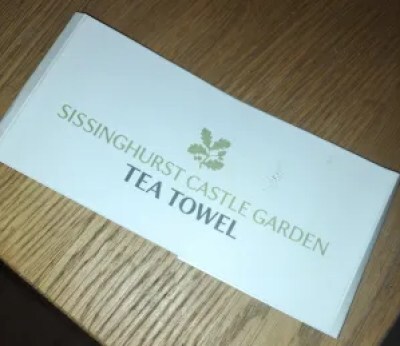 One of my classier items for recycling – the wrapper from a National Trust tea towel, a lovely gift from my Auntie ThelmaHave you ever been on a diet that required you to write down everything you ate or drank?Have you tried to save money by recording every item of expenditure?
One of my classier items for recycling – the wrapper from a National Trust tea towel, a lovely gift from my Auntie ThelmaHave you ever been on a diet that required you to write down everything you ate or drank?Have you tried to save money by recording every item of expenditure?In both cases, it can be easier to abstain than to add to your list.
If we had to make a note of everything we recycled every day, I reckon we’d soon find ways to reduce and re-use instead – so much better for the environment.
I’m astonished to recall that when I first moved to the village in 1991 there was no recycling service. We just chucked everything in the black bin – a bigger one than we have now, emptied weekly rather than fortnightly, and thanks to our throwaway culture, it was often full.
A century ago, there would have been no council refuse collection of any kind, but nor was there much need, as there was much less waste. People bought food loose or wrapped in paper and carried it home in wicker shopping baskets. They returned empty jars and bottles for deposits. Old tins provided useful storage – no Tupperware in those days. Rag rugs gave new purpose to worn-out clothes.
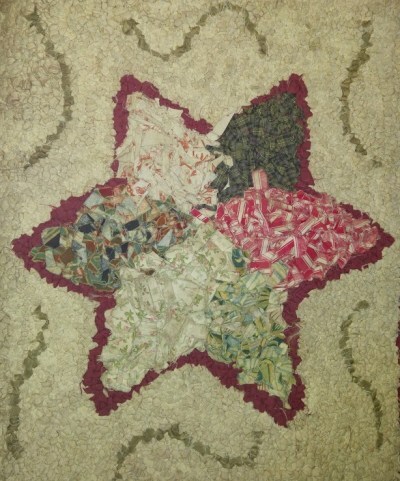 Anthologies, like rag rugs, are much greater than the sum of the parts (I am very proud of having made this rag rug too!)
Anthologies, like rag rugs, are much greater than the sum of the parts (I am very proud of having made this rag rug too!)Everything else the householder had to dispose of on his property, burning it in the hearth or garden bonfires, or burying it in the garden. Even now, bits of old china, glass and metal buried decades ago frequently rise to the surface in my flowerbeds.
As a crime writer, I can’t help wondering what lies beneath my lawn…
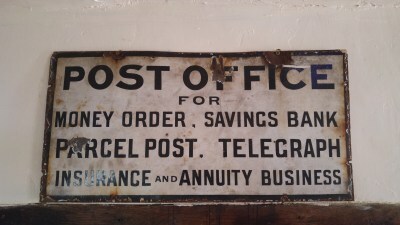 This sign lay abandoned in my back garden when I moved in, the legacy of when my cottage used to ve the village post office.
This sign lay abandoned in my back garden when I moved in, the legacy of when my cottage used to ve the village post office.Not all rubbish could be burned or buried. Rag-and-bone men used to collect cumbersome items and sell them on as scrap. Even as late as the Sixties, a rag-and-bone man occasionally drove a van or a horse and cart slowly down our street in suburban London, calling “any old lumber?” A popular sitcom during my childhood was Steptoe and Son, revolving around a scrapyard. Could Yate’s Sort-It Centre make a great setting for a modern comedy series? I like to think so.
I’m pleased to say I found taking part in the council’s recycling research just as interesting as the squash parties of my childhood.
I’m just glad that this time I didn’t have to taste-test samples.
THIS WEEK’S NEWSDRIVEN TO MURDER (Sophie Sayers #9)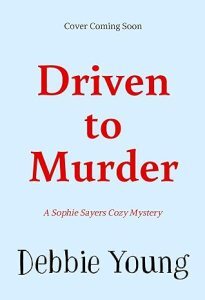 A placeholder image is now up on Amazon – cover reveal to follow soon!
A placeholder image is now up on Amazon – cover reveal to follow soon!On Monday I submitted the manuscript for my ninth Sophie Sayers cosy mystery, Driven to Murder, to my editor at Boldwood Books, and this morning I was delighted to receive an enthusiastic email with her proposed (very light) edits.
“What a tonic!” she said, going on to describe it as “a rich experience for returning fans” as well as “accessible to new readers”.
Now it’s down to me to make a few minor revisions in line with her comments, and then it goes to a copy editor, then a proofreader. Meanwhile, she will brief the cover designer, and I can’t wait to see what the designer comes up with!
The official launch date is 28th January 2024, but if you’d like to kept up to date by my publisher about progress, and any special offers on my other Boldwood Books, you might like to sign up for their Debbie Young mailing list here.
GUEST POST AT IHEARTMURDER BOOK BLOG Karen Louise Hollis’s second novel is now out
Karen Louise Hollis’s second novel is now outKaren Louise Hollis, author of Starting Again at Silver Sands Bay, kindly invited me to be a guest on her book blog, interviewing me about my books and my writing life.
If you’d like to read the interview, hop over to https://iheartbooks.blog/2023/09/13/author-interview-debbie-young/ where you’ll also find information about Karen’s own books.
STROUD BOOK FESTIVAL TALK BOOKINGS NOW OPEN (Sunday 12th November)If you’d like to come to hear me in conversation with Kat Ailes, debut author of The Expectant Detectives (great title!), bookings are now open for our Stroud Book Festival event at The Subscription Rooms at 4pm on Sunday 12th November. Click here for more details and to book your tickets now.

 In the meantime, just down the A46 from Stroud, I’m gearing up for the next book talk in the Hawkesbury Upton Literature Festival series of events in my home village.
In the meantime, just down the A46 from Stroud, I’m gearing up for the next book talk in the Hawkesbury Upton Literature Festival series of events in my home village.
This time, the theme is “Research and Inspiration: The Stories Behind the Stories“, and eight authors of novels across different genres will be in conversation about where they get their ideas, how they undertake their research, and how they weave facts seamlessly into fiction to create compelling, convincing stories.
Come and join me and Ali Bacon, Jean Burnett, Heather Child, Mari Howard, Justin Newland, and HJ Reed, from 2pm until 5pm in the Bethesda Chapel, Park Street, Hawkesbury Upton GL9 1BA. The ticket price of £5 includes tea and cake, plus a £2 discount voucher to spend on the book of your choice by one of the guest authors.
There just 50 seats in our venue, a light and airy Victorian chapel, so book now to be sure of a place, using this Eventbrite link.
For more information about Hawkesbury Upton Literature Festival, visit www.hulitfest.com.
September 6, 2023
Lost and Found
With a stressful day ahead including trips to the doctor and dentist, I don a jaunty blue and green necklace to lift my spirits. It’s a gift from my friend Elizabeth, whom I’ve known since we started secondary school 52 years ago this month. Its bright colours match most of my clothes, and it rests comfortably on my collarbone – my favourite length for a necklace.

Arriving home after completing all my errands, I’m pleased with myself, until I put my hand to my throat. My necklace has vanished.
I tell myself to keep calm. I have form on losing necklaces only to find them again.
Once at a student disco, the DJ stopped the music, turned up the house lights, and directed everyone to search the floor. Then I realised the necklace hadn’t gone missing. It had just come undone and slipped down inside my top. To my acute embarrassment the DJ announced, “Ok, you can stop looking now. She’s found her necklace. It was round her neck.”
It’s not as if this is my only necklace.
I have a drawerful, unlike my paternal grandmother who alternated between two, or my maternal grandmother who always wore a simple gold chain. But although most of my jewellery is cheap and cheerful, you can’t put a price on a necklace chosen for you by a loved one, and I feel bereaved.
With a deadline looming for a magazine article, there’s no time to retrace my steps. I’ll be burning the midnight oil in any case.
I turn on my computer, pausing only for a quick prayer to St Anthony, the patron saint of lost things.
I don’t usually converse with saints, but having mentioned him, tongue-in-cheek, in my latest novel, it would be churlish to overlook him.
Next day I make an unplanned return trip to my GP’s practice. While queuing at the pharmacy window, I ask my daughter to check lost property at reception. When she reappears, missing necklace in hand, I shriek with joy. From the waiting room, patients regard me with astonishment. Perhaps they think I’ve just been given a miracle cure. But I’m simply a shepherdess rejoicing at finding her lost lamb.
So, with the new school year starting, when your child or grandchild comes home without gym shoes/pencil case/blazer, you know what to do. Just tell St Anthony I sent you. I’d like to keep in with him if I can.
 Reunited with my necklace – hurrah!
Reunited with my necklace – hurrah!PS When looking up images to add to this post, I discovered The Noun Project (www.thenounproject.com), which is “building a global visual language that unites us” – and all their images are royalty free. I love their image for “lost and found”, pictured as the featured image at the top of this post. I may be a wordsmith, but I love the idea of a universal language of pictures!
Further Reading on the Theme of Lost and Found[image error] [image error]
The seventh Sophie Sayers mystery, Murder Lost and Found, kicks off with a startling find in a school lost property cupboard.
[image error] [image error]
The fourth Gemma Lamb mystery, Artful Antics at St Bride’s, includes a scene in which the youngest class seek the help of St Anthony.
This post first appeared in the September edition of the Tetbury Advertiser
August 30, 2023
Why the English Countryside Makes a Great Setting for Mystery Novels
This week I’m in conversation with my author friend Helen Hollick about why rural communities make such great settings for cosy mystery novels
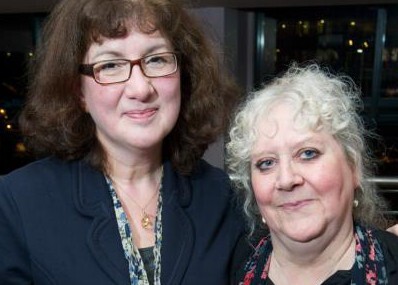 Taken when I first met Helen Hollick at the launch of my first book many years ago! We have since become firm friends.
Taken when I first met Helen Hollick at the launch of my first book many years ago! We have since become firm friends.When my historical novelist friend Helen Hollick took to writing cosy mystery stories during lockdown, I couldn’t wait to read them. I’d enjoyed her Jesemiah Acorne pirate series, and her Arthurian novels were among my mum’s favourite books. What’s more Jan Christopher, the heroine of her new mystery novels was a young librarian in a public library very much like the one I belonged to as a child.
Like me, as an adult Helen moved from greater London suburbia to the countryside – in her case to Devon, rather than to my neck of the woods in the Cotswolds. Her latest Jan Treasure mystery embraces Devon life at harvest time. I’m pleased to invite Helen on to my blog to day to tell me a bit about why rural Devon – or indeed any rural community – makes such a great setting for cosy mystery stories.
[image error] Click the image to view the book on Amazon[image error]Helen: Hello Debbie, thank you for hosting me – and Jan Christopher – today!
Debbie: Jan’s adventures alternate between her native suburban London Borough of Waltham Forest and rural Devon. Why does a rural community make such a great setting for a cosy crime story?
Helen: I moved from London with my husband and daughter, (and the horses and the cats and a dog) to Devon in January 2013 – best thing we ever did!
During Covid lockdown I wanted to write something where I could use my experience of working as a London suburb library assistant during the 1970s. A cozy mystery seemed a good idea, so the Jan Christopher Mysteries came into being. Snag. I also wanted to write about Devon; not exactly autobiographical, but drawing on living in the countryside. Easy solution: alternate the locations.
I think a rural community setting appeals to readers of cozy crime because of the lure of a slower pace of life, and the huge advantage of a village community is that everyone knows each other – ideal for amateur sleuthing via murder mystery writers!
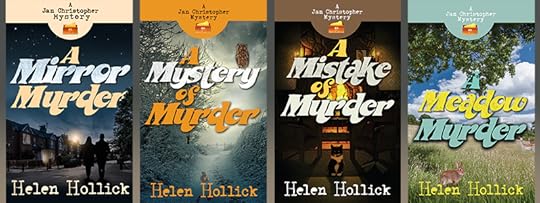 And then there were four…
And then there were four…Village gossip is no mythical exaggeration. Often X who lives at the other end of the village will know what you’re going to do before you do yourself. It’s a sad fact, but I only knew my immediate next-door neighbour when I was back in London, no idea of anyone else in the street. Here, I know almost everyone in the village, even though my nearest neighbour lives almost ¼ of a mile away!
And the biggest appeal of all? Many people long to live in the countryside, away from the hustle and bustle, but have no opportunity to do so. To escape into an outdoor life via the pages of a book is the next best thing to actually doing it – and with the added bonus of working out ‘whodunit’, well, who can resist?
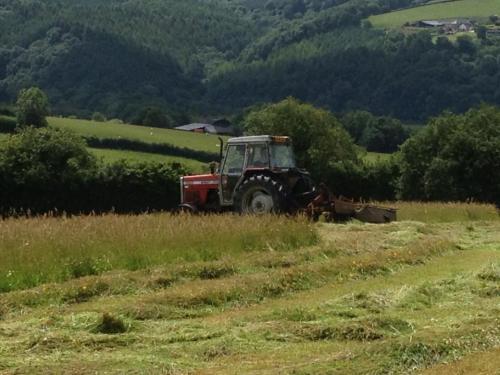 Work in progress
Work in progressDebbie: What does the rural setting offer that the urban one doesn’t? – and vice versa?
Helen: North Devon couldn’t be more different to Waltham Forest – a sprawling north-east London Borough consisting of the towns of Chingford, Walthamstow, Leyton and Leytonstone. It’s one advantage: Chingford borders the County of Essex and can boast the inclusion of Epping Forest, where I used to ride and keep my horses.
When musing about writing a murder mystery, I knew that I did not want to write it as a police procedure series. I know very little about crime investigation, beyond what I watch on TV, and anyway, my mysteries were to be set in the 1970s when we didn’t even have mobile phones, let alone the internet!
Here in a rural community we rarely see a police car, but they are everywhere in a London town.
In the countryside, strangers are all too happy to chat to other strangers. Alas, it doesn’t happen in London, everyone is far too busy rushing about from A-B with ‘no time to stand and stare’. Country people can often be found leaning on a gate, thoroughly enjoying the view.
Timekeeping rarely seems to exist. There’s a Devon word ‘Dreckly’, it basically means ‘some time soon’. Soon could be this afternoon or next month… or the next.
So in a rural setting you have fewer locals to include as characters but a greater opportunity for the community to gossip.
One huge advantage for a murder mystery, in a small rural village is that it will take a while for a summoned policeman to arrive. In town, you’re probably talking within the hour – add a couple more hours for Devon. Which gives your criminals time to get away, and time for some quality amateur sleuthing.
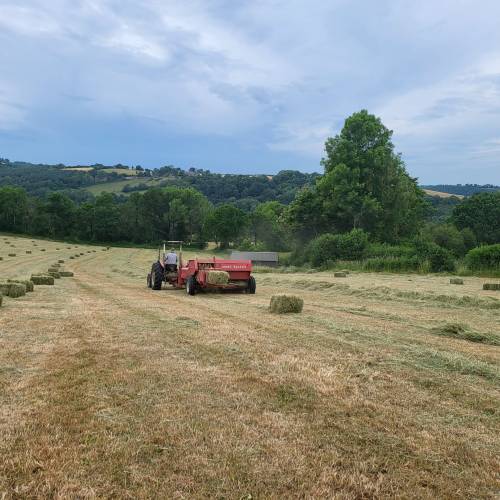 Nearly done!
Nearly done!A village will probably only have one or two shops and pubs. Town will have several in a small area. Fewer cars in villages, so the ‘grockles’ (strangers/tourists) are more readily noticed.
Good tip for mystery writers: visitors’ cars are usually clean.
The locals get used to the muddy lanes and soon don’t bother cleaning their cars!) A murder committed in town will usually get immediate attention. In a village – well someone in authority will come along ’dreckly…
Debbie: Like Jan – and Sophie Sayers and me! – you’ve moved in real life from an urban to a rural setting. But your move to the countryside, like mine and Sophie’s, was permanent. Jan clearly appreciates the beautiful, peaceful scenery – we know this as the stories are written mostly in her voice. Do you think it might tempt her to move permanently to Devon, if Laurie can get a work transfer?
Helen: Oh that would be telling wouldn’t it? Although in the postscript of Episode One, A Mirror Murder, (with the p.s set in modern times,) a much older Jan is clearly not in London. Does she move permanently? When? How? And is she still with DS Laurie Walker? Ah…all that will be in another story!
Debbie: How do your real-life neighbours take to having a crime-writer living in the midst of their peaceful community? Have you ever been asked to solve any local crimes or misdemeanours?
Helen: No, to the second part of the question, thank goodness, although I’ve often had to search my fields for a missing horseshoe that one of the horses has lost. Or one of the dog’s toys – or, actually, even a missing pony! We have a couple of Exmoor ponies and they are frequent escape artists. We found them once, over half-a-mile away almost up at the village. I’m sure they were heading for the pub!
My real-life neighbours are wonderful. I must add that my quirky characters are all entirely fictional, apart from three people: Heather is my friend who is often involved with the village community shop. We have tea and cake together usually once a week and often discuss the next mystery. So of course she had to become the Devon shopkeeper in my stories. In A Meadow Murder I have also included pub landlords Hazel and Steve, primarily as a thank you for their wonderful hospitality at the Exeter Inn. Hazel, Steve and Heather gave their full permission to be used as characters, and I have assured them that they would always be ‘goodies’ and not victims!
I have heard that there’s often a fair bit of chatter in the village shop about my books … mostly good, I hope!
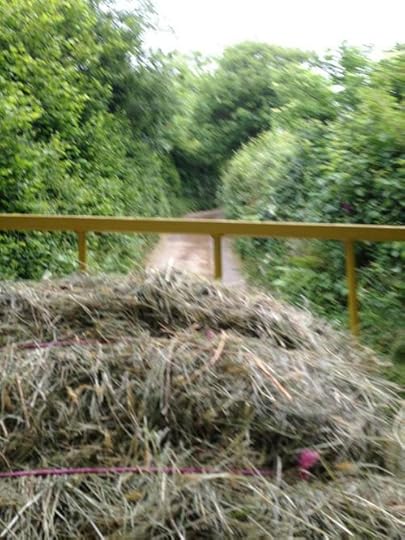 Jan takes a ride on top of a loaded tractor in “A Meadow Murder”
Jan takes a ride on top of a loaded tractor in “A Meadow Murder”Debbie: My fellow bell-ringers at our parish church are always suggesting new murder ideas for me – 101 ways to kill someone with a church bell! Does your adopted home in Devon inspire you with new ideas for crime stories that are specific to rural Devon or to the countryside in general?
Helen: Oh yes! Read A Meadow Murder and find out! I came up with the plot last summer whilst watching our local farmer, Andrew, trundle up and town turning the cut hay in our top field. The field slopes so you can’t see the bottom at all. “What if…” I thought.
The cover image for Meadow Murder is actually my field. The deer and rabbits have been added, but we do see them there.
Debbie: Jan’s stories are set in the 1970s. Her home town in north-east London will have changed a lot – to what extent have things changed since then in rural Devon? How different would the stories be if Jan was a member of Generation Z, ie born between 1990 and the early 2000s?
Helen: A modern Jan would be very different –which is why the stories are set in the 1970s, ‘my’ years as it were. (I was born in 1953.) Technology is a big difference, nearly everyone has cars, phones, laptops today. Though not everyone has a good Internet connection – ours can be very sporadic. We get quite a few power cuts too. I really enjoy your Sophie Sayers mysteries, Debbie, but, well, I just couldn’t do it. Jan and Laurie and their families are from the ’70s and that’s that! The thought of writing modern day just doesn’t appeal to me at all. I guess nostalgia wins out for me – and I hope for my readers, too!
Debbie: Finally, thank you for allowing me to share below an extract from A Meadow Murder to whet my readers’ appetites!
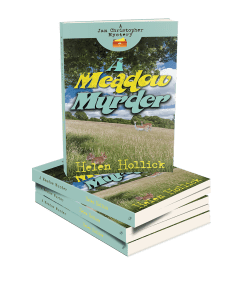 Extract from A MEADOW MURDER
Extract from A MEADOW MURDER[image error]The tractor was trundling off down the row, the baler scooping up the cut hay, packing it into slabs, automatically tying them together with two lengths of baler string and shooting the trussed rectangular bale out behind, before repeating the whole process. Mr Greenslade drove the tractor round the field in ever decreasing circles – or more correctly, odd-shaped squares. Down one row, along the bottom of the meadow, up the furthest row, across the top of the meadow, down the next row, along the bottom… coming at each turn closer to the middle of the field until there were only two rows left.
Our job, I discovered, was to follow the tractor and stack the bound bales in groups of six or eight in order to make the next step of loading them onto the trailer easier.
“Roll them,” Kevin advised when he saw me lifting a bale by the string. “Less likely for the twine t’ break an’ easier on your back. Roll with the lie of the land, downhill.”
It took a while to cover the entire field, walking up and down the rows – down was fine, up… the hill seemed to get steeper with each row. Funny how it didn’t look steep from the top, but imitated Mount Everest from the bottom. (Slight exaggeration, but you know what I mean!) At last the tractor came to a stop, with (and we all cheered) no more breakdowns. Scattered across the field as if they were some form of crude artistic sculptures, were stacks of hay, baking in the heat of the haze-shimmering, airless afternoon. We were all somewhat sweaty and grimy, with sore backs and smarting hands, despite wearing gloves. But the work was only half done. Five-hundred bales of hay had to be transferred into the security of the barn before those blackening clouds came any nearer.
If I thought anything we’d done so far was backbreaking, hard work, I soon discovered that I’d been wrong. Stacking the bales on the trailer was much harder, even though I had one of the easier assignments. Aunt Madge and I were on the flat bed of the trailer receiving the bales that the men tossed up. We had to stack them one layer at a time, with each layer criss-crossing, otherwise, if they’d been simply one atop the other the whole lot would fall down. The first three layers were quite simple, but as the stack got higher, the bales had to be tossed higher, and we had to climb higher to keep up with the enthusiastic (and apparently untiring) bale-tossing men. I say it was hard work (it was!) but it was also a laugh. Teasing and banter between us, laughing as the tractor pulling the trailer lurched across the field from each six or eight stacked pile of haybales to the next. I had never felt as stiff and tired before, nor had I ever felt as wonderfully alive and happy.
Aunt Madge jumped down as the fourth layer began to grow, aware that she wasn’t too confident at balancing on a lurching and swaying height, which left me to do the last two layers on my own, but I’d got into the swing of it by then, so didn’t mind.
I suppose the trailer took about seventy bales. (I can’t tell you exactly; I’m guessing as I lost count somewhere along the third layer.) Then the next fun bit… there was no way I could get safely down – balancing atop a trailer stacked high with bales of hay is a challenge, believe me. Outside of learning how to fly, or leaping into Laurie’s outstretched arms in the hope that he’d catch me (both not an option), there was only one thing for it. I made myself a hollow in the centre of the top layer to ride the trailer all the way down the lane.
“Duck your head under the low trees!” Laurie called as Mr Greenslade set off negotiating the gate and the fairly tight turn from the meadow into the lane.
I have to say, it was one of the most thrilling things I’d ever done – and this included those scary, whizzy rides at the fun fair! The trailer was slow, very bumpy and rattly, and I could hear the occasional grinding of complaining brakes holding back the tremendous weight as we went down the steep hill, but the view above the hedges to across the fields was magnificent, and the ride itself was, well I can only describe it as exciting.
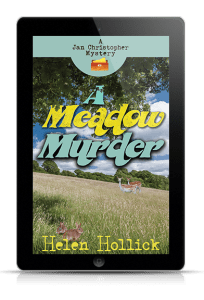 About A Meadow Murder
About A Meadow Murder Make hay while the sun shines?
Summer 1972. Young library assistant Jan Christopher and her fiancé, DS Lawrence Walker, are on holiday in North Devon. There are country walks and a day at the races to enjoy, along with Sunday lunch at the village pub, and the hay to help bring in for the neighbouring farmer.
But when a body is found the holiday plans are to change into an investigation of murder, hampered by a resting actor, a woman convinced she’s met a leprechaun and a scarecrow on walkabout…
A Meadow Murder is the fourth tale in the Jan Christopher cosy murder mystery series, the first three being A Mirror Murder, A Mystery of Murder and A Mistake of Murder… see what I’ve done there? Yes, I’ve created a proper puzzle for myself because now every tale in the series will have to follow the same title pattern of ‘A M-something- of Murder’ (Suggestions welcome!)
Based on working as a library assistant during the 1970s, the mysteries alternate between the location of Chingford, north-east London, where the real library I worked in used to be, (the building is still there, but is, alas, now offices,) and my own North Devon village, but ‘Chappletawton’ is a fictional version, larger than my rural community and has far more quirky characters.
The main characters in the series, however, remain the same: Jan Christopher is the niece, and ward, of Detective Chief Inspector Toby Christopher and his wife, her Aunt Madge. In A Mirror Murder, Jan (short for January, a name she hates) meets her uncle’s new driver, Detective Constable Lawrence Walker. Naturally, it is love at first sight… but will an investigation into a murder affect their budding romance?
“As delicious as a Devon Cream Tea! ” author Elizabeth St John
“Every sentence pulls you back into the early 1970s… The Darling Buds of May, only not Kent, but Devon. The countryside itself is a character and Hollick imbues it with plenty of emotion” author Alison Morton
About Helen Hollick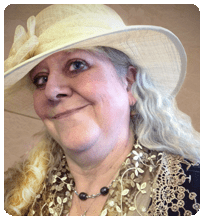 Helen Hollick
Helen HollickFirst accepted for traditional publication in 1993, Helen became a USA Today Bestseller with her historical novel, The Forever Queen (titled A Hollow Crown in the UK) with the sequel, Harold the King (US: I Am The Chosen King) being novels that explore the events that led to the Battle of Hastings in 1066. Her Pendragon’s Banner Trilogy is a fifth-century version of the Arthurian legend.
She writes a nautical adventure/supernatural series, The Sea Witch Voyages. She has also branched out into the quick read novella, ‘Cosy Mystery’ genre with her Jan Christopher Murder Mysteries, set in the 1970s, with the first in the series, A Mirror Murder incorporating her, often hilarious, memories of working as a library assistant.
Her non-fiction books are Pirates: Truth and Tales and Life of A Smuggler.
Helen lives with her husband and daughter in an eighteenth-century farmhouse in North Devon.
Order in ebook or paperback from Amazon (affiliate link) or order from any good bookshopVisit Helen’s website at https://helenhollick.net Find her on Facebook @Helen.HollickFollow her on Twitter @HelenHollick
August 16, 2023
How I Wove the Legacy of the Cotswold Wool Trade into “Artful Antics at St Bride’s”
In each episode of both my cozy mystery series, I introduce new characters and settings to old favourites from previous books. This post is about some new faces and an ancient manor house at the heart of my latest Gemma Lamb Cozy Mystery, Artful Antics at St Bride’s.
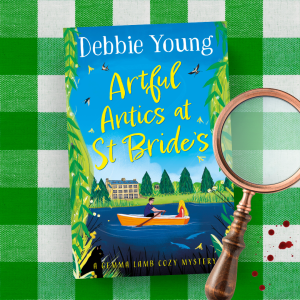 In this story, St Bride’s School acquires a secretive new pupil, Frieda Ehrlich, whose school fees are sponsored by enigmatic tycoon Sebastian Goldman-Coutts. He’s the new owner of Torrid Manor, which lies hidden behind high hedges and forbidding walls just a few miles from the school’s private grounds in the Cotswolds.
In this story, St Bride’s School acquires a secretive new pupil, Frieda Ehrlich, whose school fees are sponsored by enigmatic tycoon Sebastian Goldman-Coutts. He’s the new owner of Torrid Manor, which lies hidden behind high hedges and forbidding walls just a few miles from the school’s private grounds in the Cotswolds.
When English teacher Gemma Lamb is invited to visit Torrid Manor, she is astonished to find the historic mansion is almost derelict. With only candles lighting the house, Gemma snatches shadowy glimpses of its former glory.
Why would a supposed billionaire choose such a shabby home? What is he hiding? Or who is he hiding from?
These days, Cotswolds mansions are highly sought after by super-rich celebrities from actors and rock stars to politicians and royalty. Having made their fortunes elsewhere, they escape to a rural idyll. Yet the mansions’ original owners got rich through a very local trade: Cotswold wool.
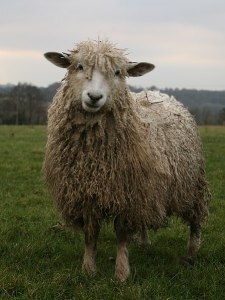 Image by DRichards2, via Wikimedia under Creative Commons Licence
Image by DRichards2, via Wikimedia under Creative Commons LicenceIn medieval times, the thick, curly, golden fleeces of the ancient Cotswold Lion breed of sheep produced the finest wool in the world. It was as prized and prestigious as precious metals and jewels. Cotswold merchants amassed great wealth by exporting wool throughout Europe.
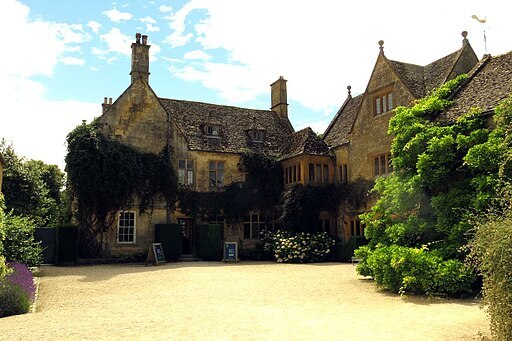 I imagined Torrid Manor to be something like Hidcote Manor. (Picture via Wikimedia under Creative Commons licence.)
I imagined Torrid Manor to be something like Hidcote Manor. (Picture via Wikimedia under Creative Commons licence.)Like modern billionaires, these rich merchants invested their riches in property. They commissioned the building of prestigious homes, fashioned from the distinctive golden-hued Cotswold stone.
Many also endowed the construction of magnificent churches. Pictured here is the parish church of St John the Baptist, Cirencester.

As demand soared, market towns sprang up throughout the region as trading centres for sheep and fleeces. If you’ve ever wondered why so many Cotswold town names include the word “Chipping”, it’s because “Chipping” is the local word for “market”. Smaller buildings provided studios and workshops for wool processors: spinners, dyers and weavers. Street names bear witness to their original purpose, such as Dyer Street or Weavers’ Row. Laurie Lee’s local pub was The Woolpack.
 The beautiful Cotswold wool town of Painswick (Public domain image via Wikimedia)
The beautiful Cotswold wool town of Painswick (Public domain image via Wikimedia)Sadly, the Cotswold wool trade declined during the Industrial Revolution, with the rise of the steam-powered mills in the north. But the honey-coloured mansions, churches, and market towns are a lasting legacy of the Cotswolds’ Golden Age of Wool.
In Artful Antics at St Bride’s, Gemma Lamb detects that Sebastian Goldman-Coutts is hiding dark secrets at Torrid Manor, including his own agenda for St Bride’s. So begins her latest quest to save the school, with unexpected consequences…
Extract from Artful Antics at St Bride’s
‘So we’re calling this term’s Essential Skills Challenge, “Raise the Roof with Your New Business”,’ Hairnet announced, making eye contact with each of the teachers in turn as if to ensure our cooperation. ‘As you know, several girls are already running successful businesses in their own modest – and safe – way, trading in home-made jewellery and handicrafts via Itsy Bitsy.’
I assumed she meant Etsy. Modern technology wasn’t her strong point.
‘Those girls can be mentors and role models for the others, in whatever line of business they choose. Although the purpose of these new businesses will be rather different: we will launch the programme with an inspirational and informative talk by someone seasoned in managing a successful business and who has much wisdom to share.’
The bursar seemed to grow a few centimetres taller at this remark, only to shrink back at her next statement.
‘A couple of you have already met Mr Goldman-Coutts, the generous sponsor of our delightful new sixth form pupil, Frieda Ehrlich.’
Hazel and I exchanged glances. Even though, like me, she always tried to see the best in our girls, I don’t think either of us would have applied the adjective ‘delightful’ to Frieda.
‘The rest of you will soon have the opportunity to meet the dear man. He has kindly agreed to address the girls after lunch tomorrow, despite his busy schedule.’
Mavis raised her hand. ‘Miss Harnett, just what is Mr Goldman-Coutts’ line of business that qualifies him to advise a hundred adolescent girls?’
Oriana raised a well-manicured forefinger, as if too indolent to put up her whole hand.
‘Whatever it is, it’s making him extremely rich. I looked up his estate on Google Earth and it’s massive. Torrid Manor’s a huge mansion, with countless outhouses, far more than a home of that size might need for stables or coach houses or garden bothies. He must be fabulously good at whatever his line of business is.’
‘Torrid Manor?’ Judith raised an eyebrow. ‘I didn’t think anyone had lived there for years.’
‘Nonsense,’ retorted Oriana. ‘He told Hazel and Gemma that’s where he lives.’
Silenced by Oriana’s curt manner, Judith pressed her lips together. I suspected Judith knew more than she was letting on. I decided to have a quiet word with her as soon as I could get her on her own. She had been a wise and supportive friend to me, and I trusted her judgement more than Oriana’s.
‘It doesn’t follow,’ said Mavis. ‘He might have inherited an even property portfolio from his father and be in the process of squandering it on decadent living and business ineptitude. I’m sure we can all think of figures in public life with a similar record.’
‘Actual wealth trumps earning power in my book,’ retorted Oriana. ‘Provided a man’s rich enough for life, I don’t care whether or not he’s an entrepreneurial genius. What matters is the here and now.’
Like to read more? Click here to order your copy online now, or ask for it by name wherever you like to buy your books.
[image error] Click the image to order your copy online now!
[image error](This post first appeared on my publisher’s blog at www.boldwoodbooks.com.)
August 9, 2023
Inspired by Books About Boarding Schools
This post was originally written for my publisher Boldwood Books’ blog to mark the launch of Artful Antics at St Bride’s , my fourth Gemma Lamb Cozy Mystery set at the eccentric St Bride’s School for Girls.
When I dreamed up St Bride’s School, the setting for my Gemma Lamb Cozy Mystery series, I was drawing not only on my experience of working at a girls’ boarding school, but also on my love of the various boarding school stories I read as a child.
While my Gemma Lamb stories are often described as “Malory Towers for grown-ups”, I preferred Anthony Buckeridge to Enid Blyton.
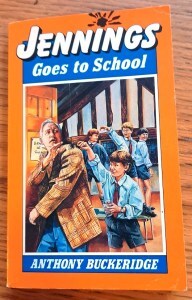 Full of hilarious schoolboy humour
Full of hilarious schoolboy humourBuckeridge, unlike Blyton, was a teacher in the private sector. His Jennings stories, set at the fictional Linbury Court Preparatory School for Boys, are masterpieces of observational comedy. Spirited protagonist Jennings is full of “wizard wheezes” (good ideas), but despite the support of meek yet faithful sidekick Darbyshire, his plans always go awry with entertaining results.
Imagine sending Richmal Crompton’s William to boarding school: this is how life might have panned out for him.
While Buckeridge, like Blyton, wrote for young readers, Crompton’s William stories initially appeared in magazines for adults before being published in book form for children.
The best school stories please all ages. I still dip into all my favourites.
I took further inspiration from Ronald Searle’s collections of cartoons set at the anarchic St Trinian’s. Its wily headmistress Miss Fritton was brilliantly played in the 1950s films by Alastair Sim and in the Noughties by Rupert Everett.
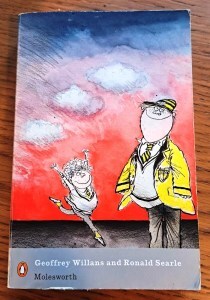 All the more amusing for being written in the voice of cynical schoolboy Molesworth
All the more amusing for being written in the voice of cynical schoolboy MolesworthSearle also collaborated with writer Geoffrey Willans to create a fictional boarding school for boys, the splendidly-named St Custard’s. Here cynical schoolboy Molesworth creates an alternative school prospectus, applying his unique take on spelling and grammar. His memorable catchphrases include “as any fuel kno” and “enuff said”.
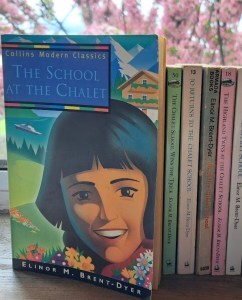 I’ve still some way to go before I have read all 64 books in the Chalet School series!
I’ve still some way to go before I have read all 64 books in the Chalet School series!Serving as an antidote to the riotous St Trinian’s and St Custard’s is the extraordinarily prim behaviour of the pupils of Elinor M Brent-Dyer’s Chalet School. The 64 novels in the series are packed with adversity, and the girls’ resourcefulness and courage make them great, if humourless, role models.
My own school stories focus on adults rather than pupils: protagonist Gemma Lamb is an English teacher.
However, in Gemma’s new fourth adventure, Artful Antics at St Bride’s, the mystery hinges on the arrival of enigmatic new pupil Frieda Ehrlich, sponsored by reclusive tycoon Sebastian Goldman-Coutts, who has just moved into a nearby derelict Cotswold mansion. Gemma soon begins to realise all is not what it seems, and so begins a new quest to save the school from disaster!
Artful Antics at St Bride’s, launched at the end of last month, is now available to order in ebook, paperback, hardback and audiobook, from wherever you prefer to buy your books.
Here’s a link to the book’s page on Amazon’s UK store – one of many places to buy it! (Disclosure: it’s my affiliate link.)
I’m pleased to be expanding my contribution to the canon of boarding school stories!
August 2, 2023
A Grand Summer Outfit
A post about “market dressing”, inspired by the fashion pages of The Times and the new Sherston Market
(This piece first appeared as a column in the August 2023 issue of the Hawkesbury Parish News.)
Much as I love reading The Times’ lifestyle supplement, I find its fashion features hard to take.
Some of the clothes in my wardrobe are older than my grown-up daughter, and many came from supermarkets or jumble sales. I flinch when the newspaper’s fashion editors quote high three-figure price tags for a single garment or accessory. Reading their advice, I feel like a Martian peering down at Planet Earth, perplexed by its inhabitants’ behaviour.
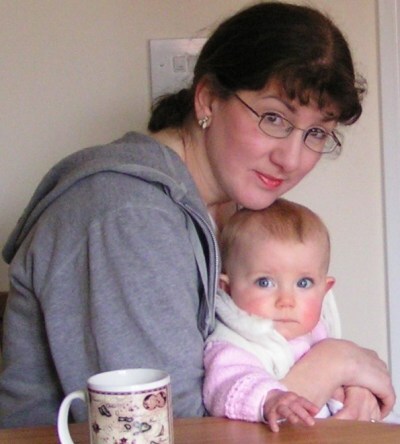 The company that made it, Racing Green, may have gone out of business in 2013, but 20 years after this photo was taken, this grey hoodie from Racing Green is still going strong, although it’s now in my daughter’s wardrobe. I still wear those earrings, a present from my dear friend Jane.
The company that made it, Racing Green, may have gone out of business in 2013, but 20 years after this photo was taken, this grey hoodie from Racing Green is still going strong, although it’s now in my daughter’s wardrobe. I still wear those earrings, a present from my dear friend Jane.
So it was with surprise and delight that last week I came across a fashion feature that at first glance seemed made-to-measure for me.
“Market dressing”, according to fashion editor Harriet Walker, is going to be “one of summer’s big trends”.
“Market dressing” means donning the kind of outfit you might wear to go shopping in your local market – the outdoor, traditional kind, rather than a supermarket like Tesco. You just slip on a summer frock, grab a wicker basket, and amble down to your nearest market square, whether on holiday abroad or at home here in the Cotswolds.
So far, so good. Addicted to wicker baskets, I have them in all shapes and sizes. In my wardrobe are plenty of summer frocks.
 Just a few of my many baskets of all shapes and sizes
Just a few of my many baskets of all shapes and sizesBut at this point, my standards part company with Ms Walker’s. According to her:
the must-have designer straw basket retails at £675“the ultimate market dress” costs £420.Yes, her recommended summer outfit comes to over a grand – and that’s without matching shoes. Marie-Antoinette playing milkmaids springs to mind.
My most expensive basket cost about twenty quid, and my newest dress less than a tenner in Sainsbury’s sale. I may still drift about the new Sherston Market in a summer frock, stashing my shopping in wickerware, but as I do so, I’ll be feeling smug for saving so much on my outfit.
Founded by the enterprising Holly of The Loaf Shack Bakery, who you’ll know from her stall outside Hawkesbury Stores on alternate Saturdays, Sherston Market has stalls offering a wide range of fresh local produce including vegetables, cheese, meat, honey, bread and cakes. It will be running every Thursday behind Sherston Village Hall from 10.30am until 1.30pm. Summer frock and wicker basket optional.
Here are a few photos from last week’s Sherston Market to whet your appetite…
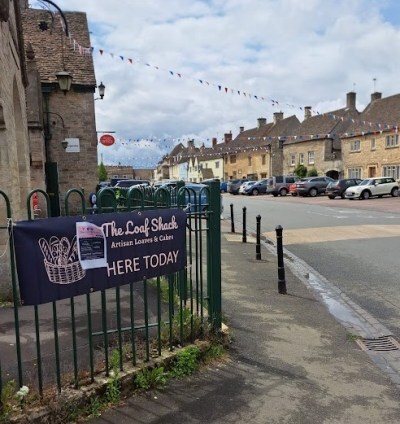 The market takes place in the car park behind the village shop
The market takes place in the car park behind the village shop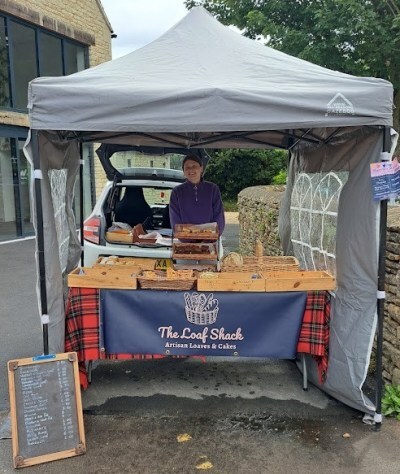 Holly, who founded the market, with her wonderful artisan bread and cakes
Holly, who founded the market, with her wonderful artisan bread and cakes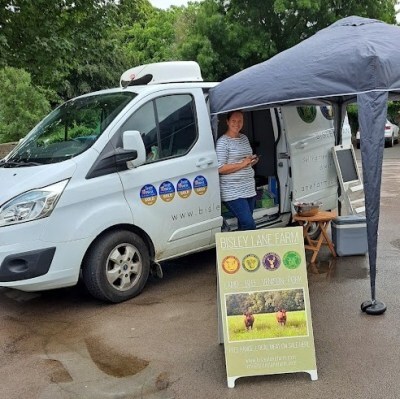 A wide selection of meats from Bisley Lane’s refrigerated van
A wide selection of meats from Bisley Lane’s refrigerated van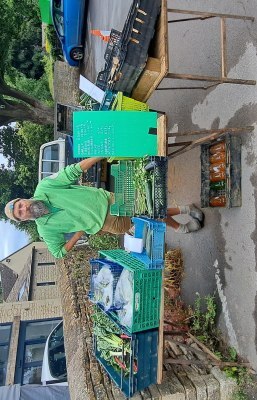 The charming Dutchman with his organic locally grown fruit and vegetables
The charming Dutchman with his organic locally grown fruit and vegetables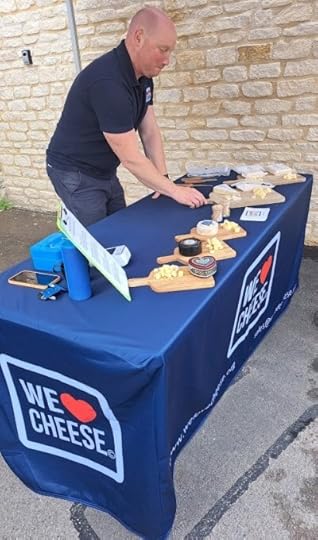 The man who loves cheese!
The man who loves cheese!
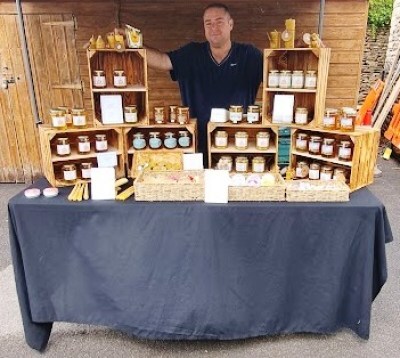 The honey stall also stocks beeswax candles, soaps and polishA Post on a Similar Theme from My Blog Archive:
The honey stall also stocks beeswax candles, soaps and polishA Post on a Similar Theme from My Blog Archive:And Finally…
My latest book, Artful Antics at St Bride’s, the fourth Gemma Lamb Cozy Mystery, is now available in ebook, paperback and audiobook, and may be ordered from wherever you prefer to buy your reading matter. It’s currently half-way through a week-long blog tour, commissioned by my publisher Boldwood Books and organised by Rachel’s Random Resources. Three leading bookbloggers share their reviews every day, on their websites and on social media.
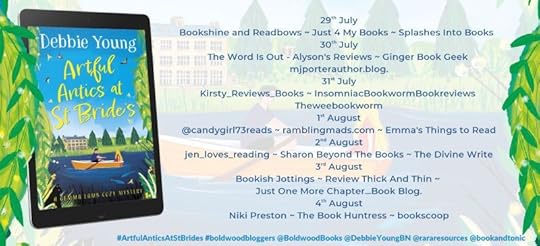 All of these book bloggers have kindly read an advance review copy of the new book and are now sharing their reviews online.
All of these book bloggers have kindly read an advance review copy of the new book and are now sharing their reviews online.I’m delighted to say that so far the feedback has been excellent. Here are a few snippets from their reviews so far:
‘The characters are so well written and are a wonderful mix of quirky personalities’ – insomniacbookwormreviews‘The dialogue is fizzy and genuinely funny – the scenes with the girls will make you smile!’ – @EmmaMerrygold‘Cosy and very witty series oozing with humour and charm’ – @alysonread‘I confess that I am now thoroughly obsessed with St Bride’s and fully intend to read every single book in this series!’ – @bookshineblog‘A wonderful series and so far I have really enjoyed every book I have read’ – @KirstyReviewsArtful Antics at St Bride’s is now available in ebook, paperback and audiobook, online from all the usual stores, and the paperback can be ordered from your local bookshop on request. If you’d like to buy it from Amazon, please click my affiliate link below to go to the book’s page.
July 28, 2023
Reading Other People’s Postcards
A post about postcards – and the postcards are all about books!
At this time of year, being a postman must be great fun, reading picture postcards about people’s holidays all over the world. At least, if I were a postman, that’s what I’d be doing!
I’ve always loved sending postcards, and I still send them to my family whenever I go away, even though I’m conscious that it’s a bit of a dying art in certain circles, thanks to the ease of sharing holiday snaps on social media and WhatsApp. And that’s without considering the ever-rising price of stamps, which long ago outstripped the cost of a postcard, making sending a handful of postcards a significant expense.
As a postcard enthusiast, I was very taken with my publisher’s idea to run a summer promotion campaign in which the authors were invited to create a postcard relating to one of their books. Boldwood Books’ clever marketing team created a template – then it was over to the authors to decide how to use them. Some chose to just tell readers about their settings, others created messages from one character to another. We shared our postcards on social media under the hashtag #BoldDestinations.
So if, like me, you have a fascination for reading other people’s postcards, here are some of my author friends’ creations – with plenty of suggestions for your summer holiday reading, including a few of my own books…
Click on a postcard to find out more about the book it relates to, via its Amazon page. All the books area available to order from all good bookshops as well as online in ebook, paperback and audiobook.
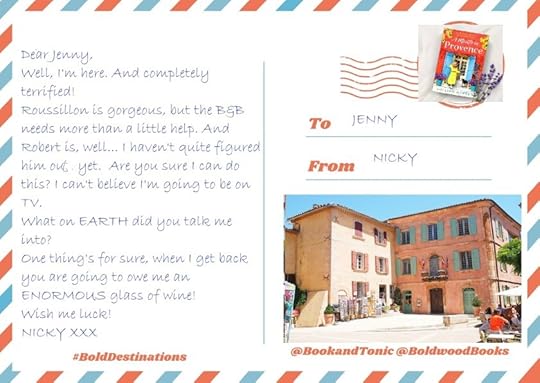 A Month in Provence by Gillian Harvey
A Month in Provence by Gillian Harvey
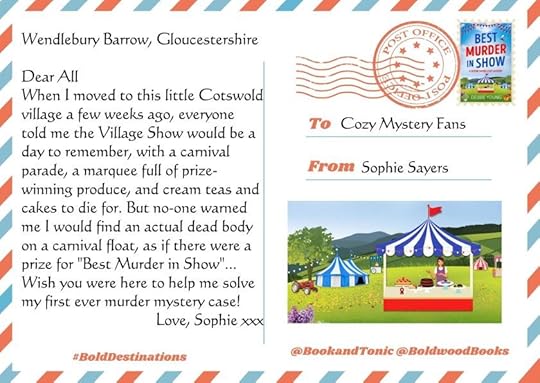 Best Murder in Show by Debbie Young
Best Murder in Show by Debbie Young
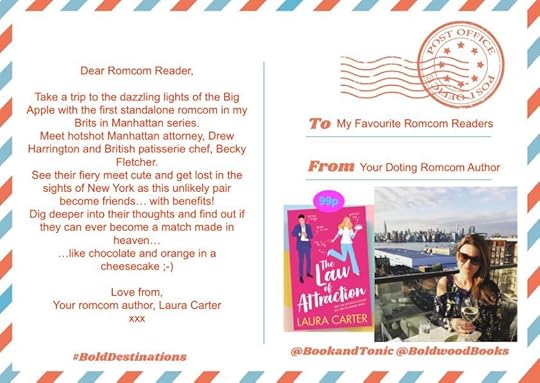 The Law of Attraction by Laura Carter
The Law of Attraction by Laura Carter
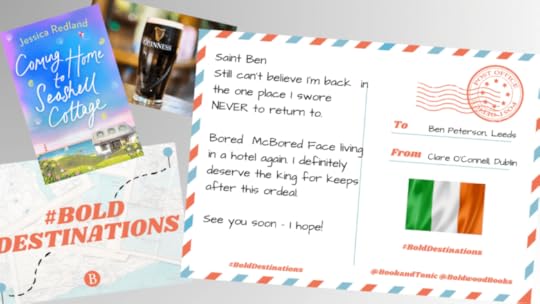 Coming Home to Seashell Cottage by Jessica Redland
Coming Home to Seashell Cottage by Jessica Redland
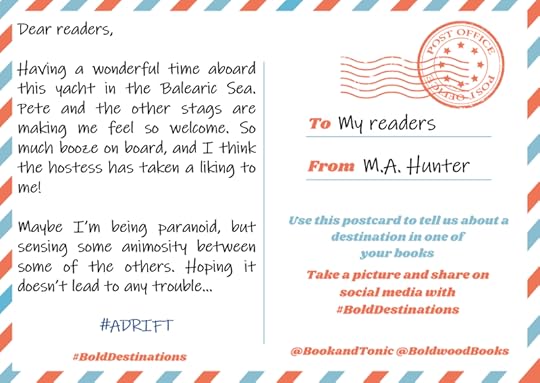 Adrift by M A Hunter
Adrift by M A Hunter
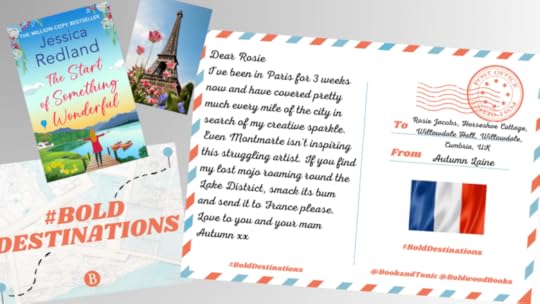 The Start of Something Wonderful by Jessica Redland
The Start of Something Wonderful by Jessica Redland
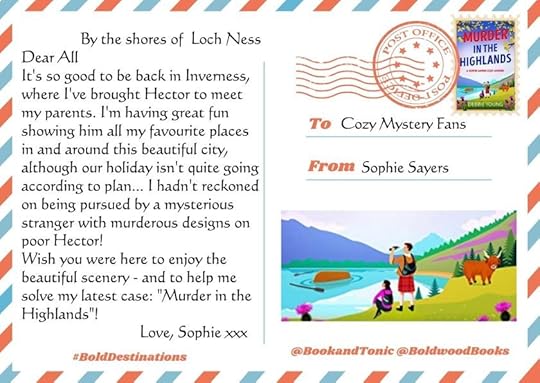 Murder in the Highlands by Debbie Young
Murder in the Highlands by Debbie Young
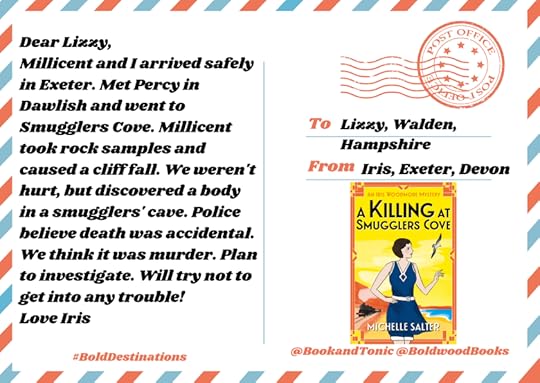 A Killing at Smugglers Cove by Michelle Salter
A Killing at Smugglers Cove by Michelle Salter
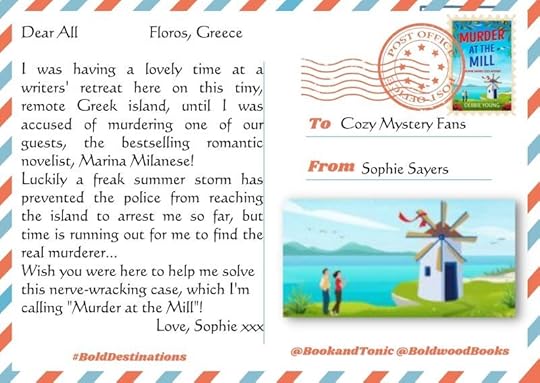 Murder at the Mill by Debbie Young
Murder at the Mill by Debbie Young
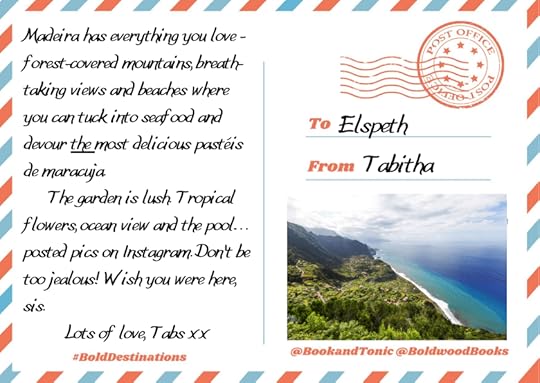 An Island in the Sun by Kate Frost
An Island in the Sun by Kate Frost
 A Mother’s War by Helen Parusel
A Mother’s War by Helen Parusel
 The Sleepover by Keri Beevis
The Sleepover by Keri Beevis
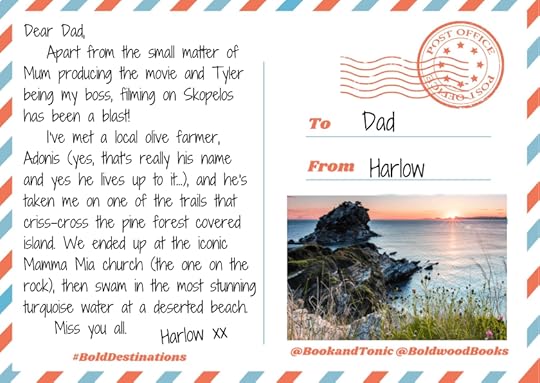 One Greek Summer by Kate Frost
One Greek Summer by Kate Frost
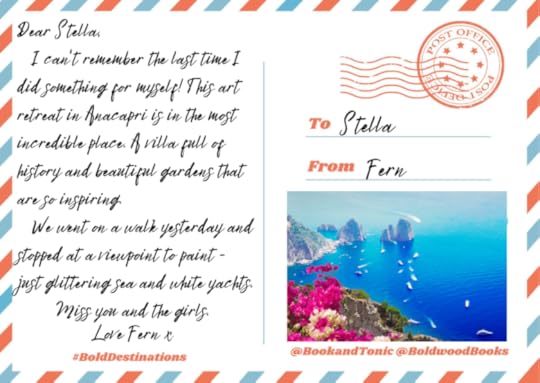 An Italian Dream by Kate Frost
An Italian Dream by Kate Frost
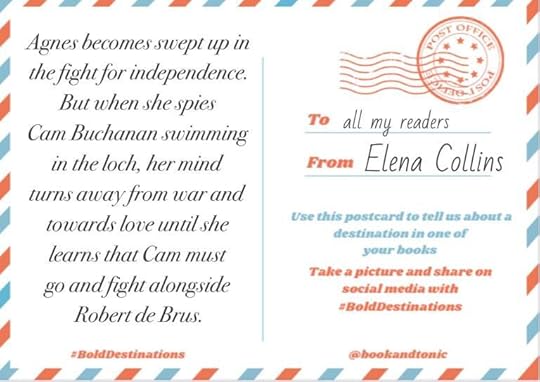 The Lady of the Loch by Elena Collins
The Lady of the Loch by Elena Collins
 Healing Hearts at Bumblebee Farm by Jessica Redland
Healing Hearts at Bumblebee Farm by Jessica Redland
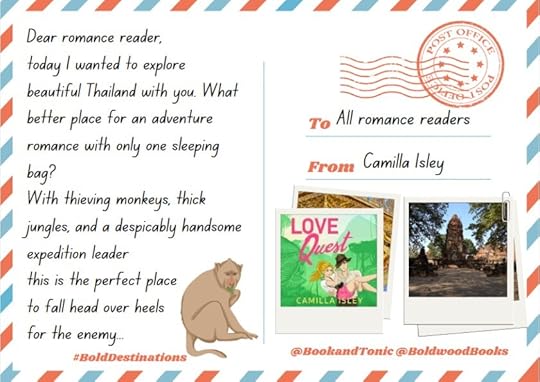 Love Quest by Camilla Isley
Love Quest by Camilla Isley
 Finding Love at Hedgehog Hollow by Jessica Redland
Finding Love at Hedgehog Hollow by Jessica Redland
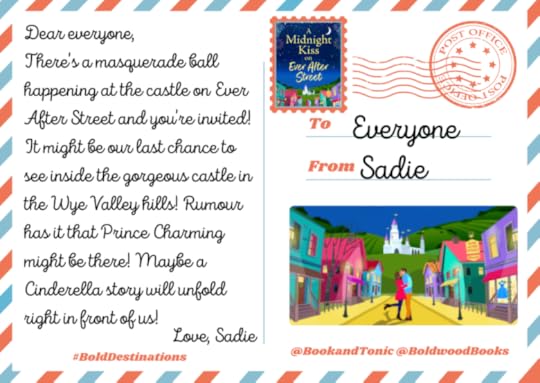 A Midnight Kiss on Ever After Street by Jaimie Admans
A Midnight Kiss on Ever After Street by Jaimie Admans
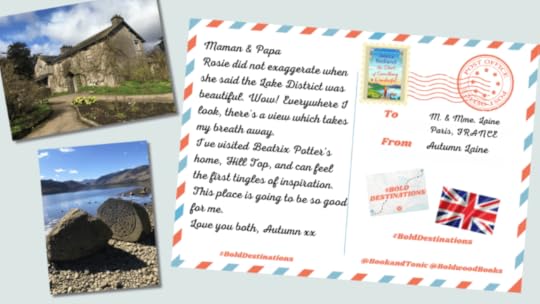 The Start of Something Wonderful by Jessica Redland
The Start of Something Wonderful by Jessica Redland
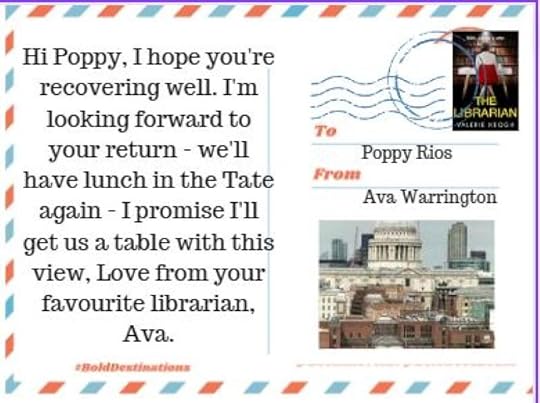 The Librarian by Valerie Keogh
The Librarian by Valerie Keogh
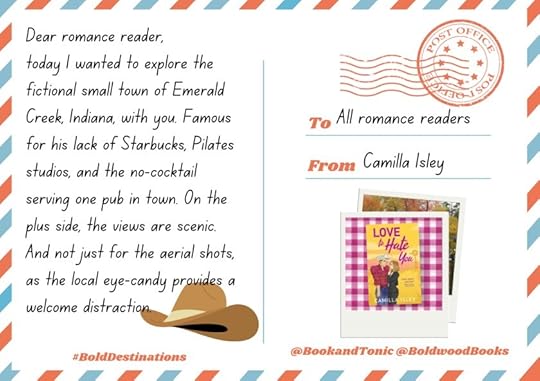 Love to Hate You by Camilla Isley
Love to Hate You by Camilla Isley
 New Beginnings at Seaside Blooms by Jessica Redland
New Beginnings at Seaside Blooms by Jessica Redland
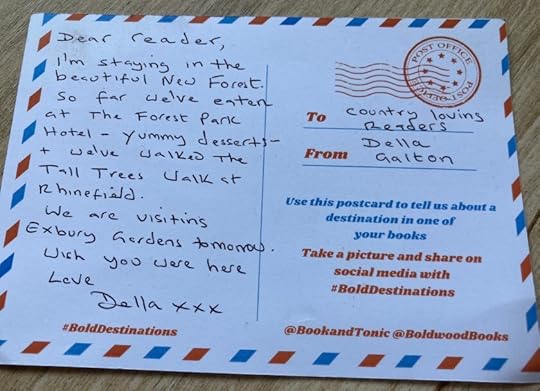 Coming Home to Puddleduck Farm by Della Galton
Coming Home to Puddleduck Farm by Della Galton
 The Golden Oldies Book Club by Judy Leigh
The Golden Oldies Book Club by Judy Leigh
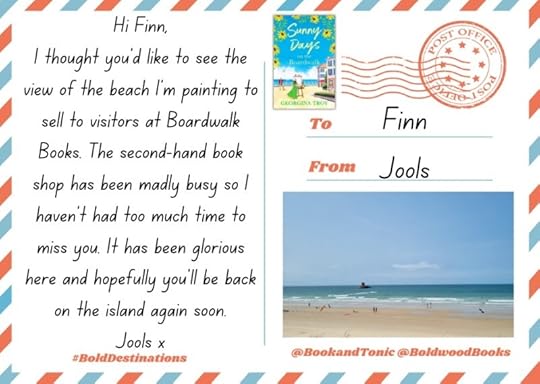 Summer Days on the Boardwalk by Georgina Troy
Summer Days on the Boardwalk by Georgina Troy
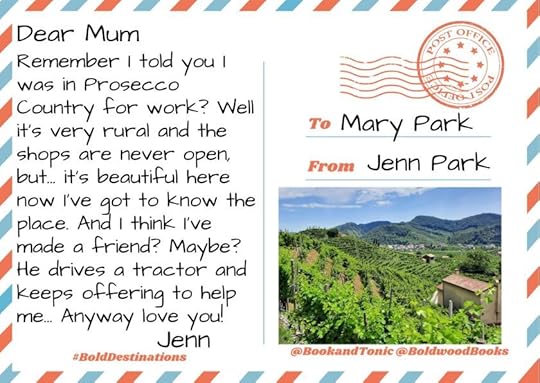 A Taste of Italian Sunshine by Leonie Mack
A Taste of Italian Sunshine by Leonie Mack
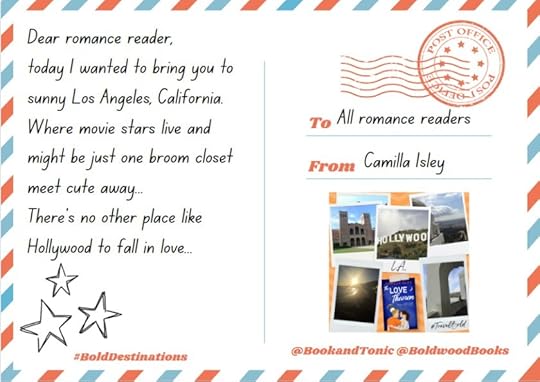 The Love Theorem by Camilla Isley
The Love Theorem by Camilla IsleyWith thanks to my author friends Jaimie Admans, Keri Beevis, Laura Carter, Elena Collins, Kate Frost, Della Galton, Gillian Harvey, M A Hunter, Camilla Isley, Valerie Keogh, Judy Leigh, Leonie Mack, Helen Parusel, Jessica Redland, Michelle Salter, and Georgina Troy for allowing me to share their postcards – and to the brilliant marketing team at Boldwood Books for coming up with the idea and creating the postcard template.
(Disclosure: the Amazon links in this post are Amazon Affiliate lihnks, which means I get a small royalty from any resulting sales, at no cost to you.)
IN OTHER NEWS
 My next book launches tomorrow!
My next book launches tomorrow!
Artful Antics at St Bride’s will be out in ebook, paperback and audiobook on Saturday 29th July. However you prefer to read, there’s an option available to suit you!
When English teacher Gemma Lamb’s school flat is wrecked by storms, maverick headmistress Hairnet insists the girls must fund its repair by setting up their own businesses – the start of a series of hilarious unintended consequences.
Meanwhile Gemma’s worries are compounded by the arrival of bossy new girl Frieda Ehrlich, sponsored by a mysterious local tycoon whose wealth is of dubious origins. Fearful for the school’s reputation, Gemma recruits an old friend to help investigate the tycoon’s credentials, jeopardising her romance with sports teacher Joe Spryke.
What is Frieda hiding?Why is her sponsor living in a derelict manor house?Why is his chauffeur such a crazed driver?And what has become of McPhee, Hairnet’s precious black cat?With a little help from her friends, Gemma is determined to solve these mysteries, restore her flat and save the school.
Order your copy via Amazon here, or from wherever you usually prefer to buy books.






